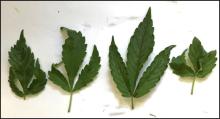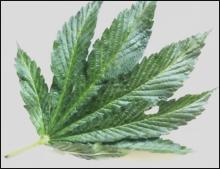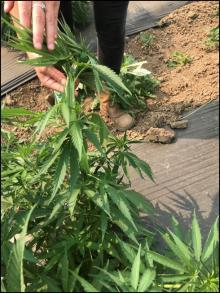Cause Spiroplasma citri, which is spread by leafhoppers, has been found in industrial hemp in Oregon and Washington in disease surveys conducted by OSU in 2021 and 2022. This pathogen also occurs in carrots in Washington as well as in brassicas, tree fruits, and ornamental flowering plants including periwinkle (Catharanthus roseus).
Symptoms Leaves take on yellow mosaic as well as leaf curling and yellowing along leaf veins. Fasciation also occurred on hemp plants that tested positive for Spiroplasma citri in OSU disease surveys in 2021 and 2022.
Cultural control
- Remove symptomatic plants as soon as they are detected.
- Control measures against the leafhopper vectors have reduced disease in some areas but are economical only in areas with significant crop losses. For details of materials and application rates, see the PNW Insect Management Handbook.
References Bove, J.M., Renaudin, J., Saillard, C., Foissac, X., and Garnier, M. 2003. Spiroplasma citri, A plant pathogenic Mollicute: Relationships with its two hosts, the plant and the leafhopper vector. Annual Review of Phytopathology 41:483-500.
Rivedal, H.M., Temple, T., Thomas, W.J., Ocamb, C.M., Funke, C., Skillman, V., Jackson, R., Jones, G., Shrestha, G., KC, A., Dung, J.K.S., and Frost, K.E. 2023. First report of Spiroplasma citri associated with disease symptoms in field-grown hemp (Cannabis sativa L.) in the Pacific Northwest. Plant Dis. 107: https://doi.org/10.1094/PDIS-07-23-1419-PDN.



